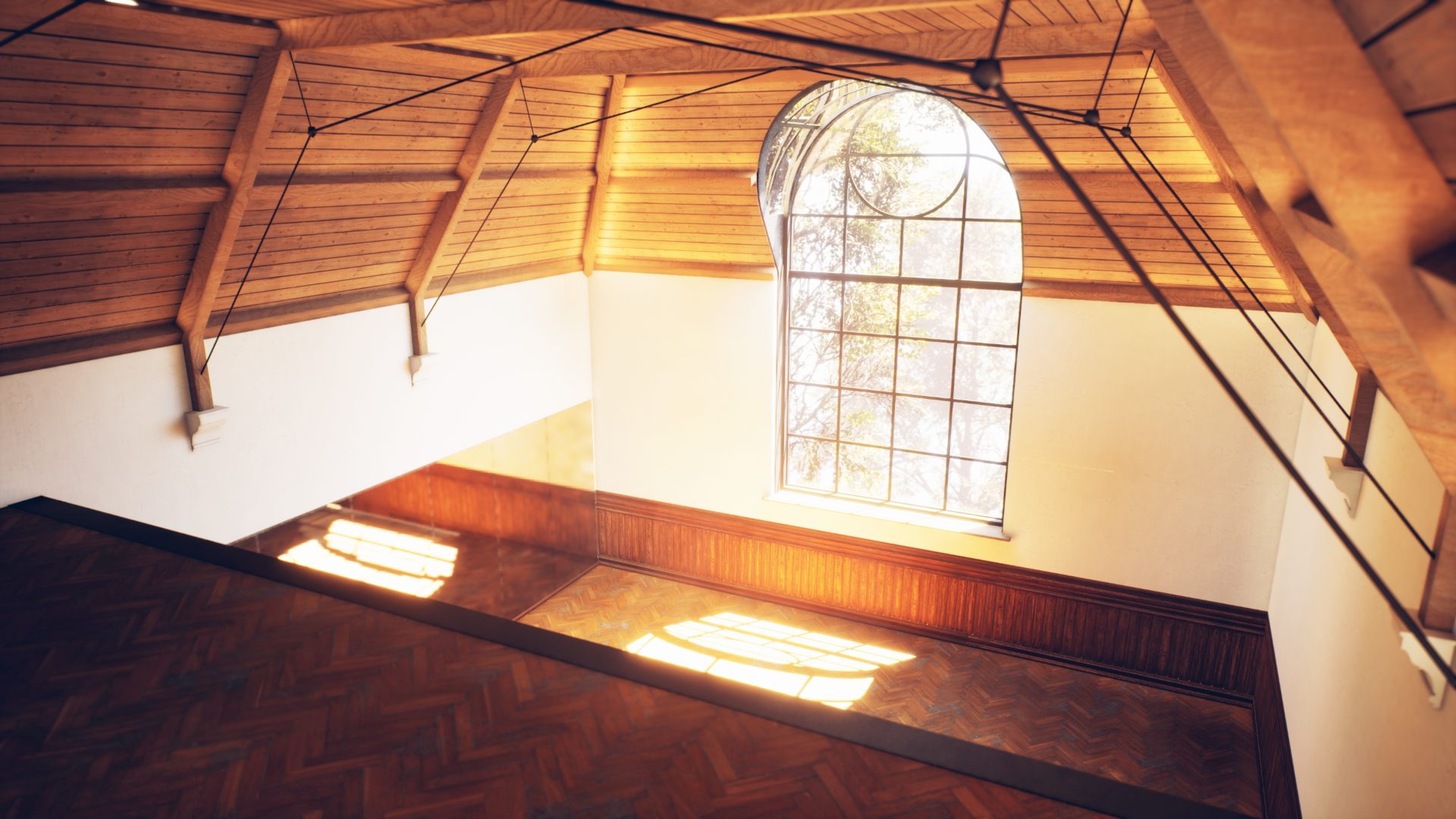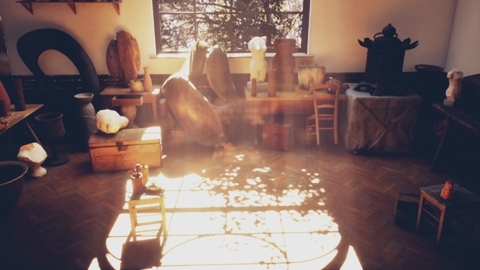Before I began using Spacious I never thought I'd ever be able to create digital art.
Hey, I'm Helen
and this is my story...
I've always loved anything practical and hands-on, and from an early age I fell in love with the art of creating forms from all sorts of different materials. I loved how different mediums had different affordances and could create different results.
Part of the art was learning how a substance behaved; mastering each one was like getting to know a new friend.
Wanting to pursue this as a career, I classically trained as a sculptor abroad in Milan, before returning to the UK to study at the Royal College of Art. Despite all of this, I still found it incredibly difficult to find work upon leaving. The only way it seemed for a sculptor to make any money was to become a 3D artist in the games or film industry, but this required digital modelling skills which I had never touched before.
Thankfully, I found out about Spacious from an old lecturer at the RCA and realised it might allow me to use my physical modelling expertise to make digital art.
Today I have a flourishing virtual studio where I create and sell my sculptures to the users of Spacious who want a piece of art in their worlds.
Keep scrolling to see my studio in action
Welcome
to My Studio
I always used to believe that people who worked on computers just lived in a boring world of grey menus and tiny icons, but I was so wrong! Working in Spacious feels like I'm really in a beautiful and airy sunlit room, even if in reality I'm in my cramped living room!
The Real Meets the Virtual
In real-life there's no way I'd be able to afford a large studio with a humungous window and plenty of storage space, but in Spacious space isn't at a premium!
There was an extensive range of studios available from Spacious' Catalogue, but the one that really stood out to me was this recreation of St Paul's studios. The real-world studios, located on Talgarth Road in London, have always been a favourite of mine, not least because they were first inhabited by the sculptor and medallist Ruby Levick whilst she was at the RCA.


Settling In
The studio was beautifully modelled by the London Historic Buildings Trust who are seeking to digitise as many of London's historic buildings as possible as part of their Virtual Preservation campaign. Purchasing it through the Catalogue also helps support their work which is really amazing.
The building begins empty, just like moving into a new house. I love the potential of a blank canvas, and so creating my perfect Spacious home felt just as exciting and personal as creating a piece of art. But fairly quickly the space began to feel lived in as I organised my modelling materials and tools.
Now after almost 6 months, the room feels like an extension of my real house, albeit this virtual space might be more organised thanks to some neat tricks that Spacious has - more on that later though!
Digital Alchemy
I mainly used clay or plaster when sculpting in the real-world, but had always wanted to learn metal sculpting and engraving.
Spacious allows me to model in one way, such as sculpting with malleable 'digital clay', and then instantly switch the material to something else such as bronze.
This workflow has even allowed me create wooden sculptures with forms that would be nearly impossible to recreate in reality!
Clay
Wood
Bronze
Full Flexibility
A really (if not the most) important element in any artist's studio is the lighting.
This is where Spacious really comes into its own!
Since the whole world is lit up with actual lights, changing the lighting is as simple as turning on a lamp.
But, of course, I can do much more than just that! I can place spotlights anywhere in space that I need, even turning off gravity so that they can float in mid-air.
There's also the possibility to connect lights together using Rhythm. By simply dragging wires between them I can then control their settings all at once, such as adjusting their brightness, temperature or even making them a certain colour.
Solar Power
And I can't forget about the sun!
St Paul's studios were designed with large north facing windows, and so during the day I get an amazing soft light though them.
If I need a specific lighting set up then I can simply close the blinds, or just change the time of day to night.
I can even change the sun angle so that it directly shines through the window if I need some dramatic illumination!

Kitbashing
One of my favourite benefits of having all my models together in a physical space is the constant inspiration it gives me.
I can seamlessly grab previous sculptures (or, more recently, interesting objects that I've 3D scanned) and incorporate them into whatever I'm currently creating!
Compared to having everything tucked away in a file explorer this is infinitely better.

Cluttered Is the New Efficient
The little I've seen of standard computers has convinced me that whilst they may be really good for getting certain things done quickly, they are just far too clinical for truly creative workflows.
Part of my design process is trying lots of different things quickly, often things that I see around me in my day-to-day. When staring at a screen you lose all of that serendipity.
My designs wouldn't feel human without the happy accidents and imperfections that happen along the way; these ultimately add up to create a better piece of art in my opinion.
Just Sweep It Into the Portal
Having said all that about having everything immediately around me, there of course becomes a point when there becomes too much.
Before Spacious, I used to store old art pieces that hadn't sold in expensive storage units. Now I can literally just push them through a portal into a world filled with storage shelves; genius!
The great thing is that even then they're never that far away. I can easily summon my storage worlds from the main menu and drag anything out of the archive that I need.
And having everything on-show (rather than in storage crates) makes it so much faster to find what I need. I don't have to be at the mercy of lazy file naming or convoluted folder hierarchies anymore!
Instant Preview
A hard part of being a sculptor is anticipating where your art might be displayed in the future.
Being able to adjust for different lighting conditions and various backdrops right as I'm modelling means I can test my sculpture in multiple contexts, then immediately change things in real-time.
This for me has been a game changer, as before I'd have to lug my sculpture to wherever it was to be displayed, and then either try to do touch-ups there and then, or record notes for what I needed to change once I was back in the studio.
A Breath of Fresh Air
Spacious' Environmental System is so impressive that working outdoors can actually effect my sculpture.
I can fast-forward time to see the build up of verdigris if I'm using copper or brass, or see how a wooden sculpture might weather when left to the elements.
It's features like this that really sets this apart from both real-life and any 3D modelling software I've ever heard of. Many of my alumni that have moved into the games and film industry are now also starting to see the benefits of working in this more natural and intuitive way.
Without this sort of development in digital software human craft would surely have died out.
Virtual Residencies
Every artist that has ever tried a temporary residency will testify to how amazing these are for generating new ideas and thoughts.
Being in a new space with different lighting, sounds and colours triggers new concepts in a way that Pinterest just never will.
There is now a whole economy amongst the artists of Spacious where we let out and swap worlds for periods of time. This has also been a great way to get to know the other creators on the platform, and even led to some collaborations in the past.
A New Economy
Space and art now finally have a stable and meaningful platform to be traded on. The worlds that designers are creating have become in high demand by people using Spacious for everyday work, and they now see value in paying for nice art to populate their virtual homes.
When people have a personal connection to their environments, even if they might seem mundane to everyone else, suddenly design can flourish and economies take root.
Keep scrolling to learn a bit more about these digital markets...
The Spacious Economy
Because Spacious worlds should be decorated just like your home, it creates demand for high quality furniture, decorations and whole buildings/environments. This is what has sparked the Spacious economy, and it has grown into a complex market in its own right. Multiple circular economies exist within its web of transactions, one example being the creation of Decor by designers using Spacious which then gets bought by other Spacious users.
The diagram below shows a visual snippet of the economy centred around Helen's business as a digital sculptor.
For Helen, and many others, this has become their sole source of income, enabling more artists to support themselves by doing what they love!
Scroll to Zoom
It is a real joy to see artists and designers able to make a living on our platform. One of the strengths of Spacious is it's similarities with the real-world, enabling traditional makers to dive right in and directly apply their skills and intuition.

Jonah Ling
Lead Developer at Spacious
Back to top
Envisioned by

This project forms part of my Cinematic and Videogame Architecture MArch at Univeristy College London.
Student Number: 20033821
Candidiate Number: DQSL1

